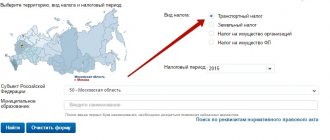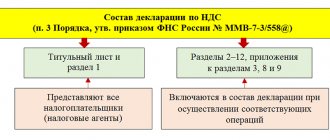Basis and legal basis
Water tax is a federal direct tax, the legal basis of which is laid down in Chapter 25.2 of the Tax Code of the Russian Federation.
This chapter, and with it the water tax itself, was introduced in 2005. Before this time, there was another tax - a fee for the use of water bodies, which was paid on the basis of the Federal Law of May 6, 1998 N 71-FZ “On fees for the use of water bodies” (now this law has lost force). Since 2007, a new Water Code came into force, which narrowed the circle of water tax payers by abolishing the licensing system for the use of surface water bodies. The right to use such objects is now acquired on the basis of a water use agreement or a decision to provide water objects for use, that is, within the framework of contractual civil legal relations. And for the use of a water body or part of it, a non-tax fee is charged - it’s called a fee for the use of water bodies. Article 333.8 of the Tax Code has also undergone changes in connection with these innovations - it has been supplemented with a clause according to which organizations engaged in water use on the basis of agreements or decisions on the provision of water bodies for use, concluded and adopted after the entry into force of the Water Code of the Russian Federation, are not recognized as payers of water tax .
We can say that the water tax is gradually being replaced by a non-tax payment for the use of water bodies.
Taxpayers
Taxpayers of water tax are organizations and individuals engaged in special or specific water use in accordance with the legislation of the Russian Federation, recognized as an object of taxation.
Organizations and individuals who use water on the basis of water use agreements or decisions on the provision of water bodies for use, respectively, concluded and adopted after the entry into force of the Water Code of the Russian Federation (it came into force on January 1, 2007) are not recognized as taxpayers.
The Water Code provides for two grounds for the use of water bodies: a water use agreement and a decision to provide a water body for use.
a fee of the same name is charged on the basis of an agreement .
An example of calculating water tax on water intake
Let us assume that an organization has a license to withdraw water for production needs from a well located in the Pechora River basin and equipped with means of measuring water volumes. The quarterly water use limit is 320,000 cubic meters. m. The organization collected 360,000 cubic meters in the first quarter of 2021. m of water. Let's calculate the amount of water tax for the 1st quarter of 2021.
During the quarter, the organization allowed an excess amount of water to be withdrawn. Its value is:
360,000 - 320,000 = 40,000 cubic meters. m.
Due to the presence of an excess volume, the tax will consist of two components:
1. In terms of volume within the limit, the tax will be:
320,000 cu.m. m × 300 rub. / 1,000 cubic meters m × 2.31 = 221,760 rub.,
Where:
320,000 cu.m. m - volume of water within the water use limit;
300 rub. - the rate established by sub. 1 clause 1 art. 333.12 Tax Code of the Russian Federation for 1,000 cubic meters. m volume of water taken;
2.31 - coefficient applied to the rate for 2021 in accordance with clause 1.1 of Art. 333.12 Tax Code of the Russian Federation.
2. For volumes exceeding the limit, the tax will be:
40,000 cu.m. m × 300 rub. / 1,000 cubic meters m × 2.31 × 5 = 138,600 rub.,
Where:
40,000 cu.m. m - volume of water in excess of the limited value;
300 rub. - the rate established by sub. 1 clause 1 art. 333.12 Tax Code of the Russian Federation for 1,000 cubic meters. m volume of water taken;
2.31 - coefficient applied to the rate for 2021 in accordance with clause 1.1 of Art. 333.12 Tax Code of the Russian Federation;
5 - coefficient applied to the rate for over-limit volume in accordance with clause 2 of Art. 333.12 Tax Code of the Russian Federation.
Thus, for the 1st quarter of 2021, the organization will have to pay to the budget an amount of water tax equal to:
221,760 + 138,600 = 360,360 rub.
Objects of taxation
Water tax
The following types of use of water bodies are recognized as objects of taxation by water tax:
- water intake from water bodies;
- use of water areas, with the exception of timber rafting in rafts and bags;
- use of water bodies without water intake for hydropower purposes;
- use of water bodies for the purpose of rafting wood in rafts and purses.
The following are not subject to taxation:
- abstraction from underground water bodies of water containing minerals and (or) natural medicinal resources, as well as thermal waters;
- abstraction of water from water bodies to ensure fire safety, as well as to eliminate natural disasters and the consequences of accidents;
- water intake from water bodies for sanitary, environmental and shipping releases;
- intake of water from water bodies by sea vessels, inland and mixed (river-sea) vessels to ensure the operation of technological equipment;
- abstraction of water from water bodies and use of water areas for fish farming and reproduction of aquatic biological resources;
- use of water bodies for navigation on ships, including small boats, as well as for one-time landings (take-offs) of aircraft;
- use of the water area of water bodies for the placement and parking of swimming facilities, placement of communications, buildings, structures, installations and equipment for carrying out activities related to the protection of water and aquatic biological resources, protection of the environment from the harmful effects of water, as well as the implementation of such activities on water bodies ;
- use of the water area of water bodies for state monitoring of water bodies and other natural resources, as well as geodetic, topographical, hydrographic and survey work;
- use of the water area of water bodies for the placement and construction of hydraulic structures for hydropower, land reclamation, fishery, water transport, water supply purposes and for drainage purposes;
- use of water areas for organized recreation by organizations intended exclusively for the maintenance and service of disabled people, veterans and children;
- use of water bodies for dredging and other work related to the operation of navigable waterways and hydraulic structures;
- use of water bodies to meet the needs of national defense and state security;
- abstraction of water from water bodies for irrigation of agricultural lands (including meadows and pastures), watering of horticultural, gardening, summer cottage land plots, land plots of citizens' personal subsidiary plots, for watering and servicing livestock and poultry, which are owned by agricultural organizations and citizens;
- abstraction of mine and collector-drainage waters from underground water bodies;
- use of water bodies for fishing and hunting.
Payment for the use of water bodies
The list of grounds for providing water bodies for use on the basis of an agreement (for which a fee is charged for the use of water bodies) is established in Art. 11 of the Water Code:
- intake (withdrawal) of water resources from surface water bodies;
- use of water areas, including for recreational purposes;
- use of water bodies without abstraction (withdrawal) of water resources for the purpose of producing electrical energy.
Other types of water use are provided for use either on the basis of decisions, or do not require either the conclusion of an agreement or a decision at all.
Obtaining a well license
There has been a law in force for a long time that provides for a mandatory license for each existing well, but these rules are controlled and applied in industrial work.
As for private operation and drilling of wells, until now there was no unified system for monitoring the work being carried out.
The new law will not be aimed at controlling individual farms, but at establishing uniform measures to control the drilling and use of wells on the territory of vegetable gardening and horticultural partnerships, that is, in those territories where there is a centralized water supply to several land plots.
The license will be issued through Multifunctional Centers or through the Ministry of Water Resources.
Tax base for water tax
The tax base for water tax is determined depending on the type of water use and for each water body separately:
- when withdrawing water, the tax base is determined as the volume of water taken from a water body during the tax period based on the readings of water measuring instruments, and in their absence - according to water consumption standards;
- when using water areas, the tax base is determined as the area of the provided water space according to the license, and in case of its absence - according to the technical and design documentation;
- when using water bodies without water intake for hydropower purposes, the tax base is determined as the amount of electricity produced during the tax period;
- When rafting timber in rafts and purses, the tax base is determined as the product of the volume of wood rafted during the tax period, in thousands of cubic meters. meters and rafting distance in km, divided by 100.
Let us draw your attention once again - the tax base is calculated for each water body separately! This means that, for example, when water is withdrawn from several rivers, the tax base is calculated for each river. And it doesn’t matter that tax rates for these river basins may be the same. If different rates are established for a water body, the tax base is determined in relation to each tax rate.
Procedure for calculating water tax
Art. 333.13 of the Tax Code of the Russian Federation describes a fairly simple procedure for calculating tax. The latter is the result of the product of the size of the tax base and the increasing coefficient corresponding to the current year.
For each type of use, the tax must be calculated separately, as well as for the water bodies themselves. To obtain the total amount of tax paid to the budget, the results obtained are summed up.
Tax calculation example
Let’s say that a certain company that has a license and has the necessary water measuring instruments, in 2021, collected water from the Don River in the Volga region to maintain the production cycle. The quarterly limit is 280,000 m3. In the first quarter, the company exceeded the limit by 10,000 m3. It is necessary to correctly calculate the water tax for the first quarter.
Payment base for fees for the use of water bodies
Rates, the procedure for calculating and collecting fees for the use of water bodies are established depending on the owner of the water body: by the Government of the Russian Federation, state authorities of the constituent entities of the Russian Federation or local governments.
For water bodies that are federally owned, these issues are regulated by the Decree of the Government of the Russian Federation of December 14, 2006 N 764. According to it, the payment base is established in the water use agreement for each type of use of water bodies and is determined separately for each water body or part thereof.
The payment base is:
- for payers who withdraw water resources from water bodies or parts thereof - the volume of permissible withdrawal of water resources, including the volume for transfer to subscribers, for the payment period;
- for payers using water bodies or parts thereof without withdrawing water resources for hydropower purposes - the amount of electricity produced during the payment period;
- for payers using water areas of water bodies or parts thereof - the area of the provided water area of the water body or part thereof.
If water bodies are owned by a constituent entity of the Russian Federation, then the rules for them must be established by that same constituent entity.
Tax and payment periods
The tax period for water tax is quarterly.
Accordingly, it is necessary to pay the water tax and submit reports on it quarterly (no later than the 20th day of the month following the reporting quarter).
As for fees for the use of water bodies , the rates, procedure for calculating and collecting such fees are established depending on the owner of the water body by the Government of the Russian Federation, state authorities of the constituent entities of the Russian Federation or local governments.
For federally owned water bodies, the payment period is a quarter and is paid at the place of use of the water body no later than the 20th day of the month following the expired payment period.
Water tax rates and fees for the use of water bodies
Water tax rates are set for river basins, lakes, seas and economic regions in rubles per 1 thousand cubic meters. water taken from surface or underground water bodies - Art. 333.12 of the Tax Code of the Russian Federation.
From 2021, water tax rates are indexed to 1.52. These changes were introduced into the Tax Code by Federal Law No. 366-FZ of November 24, 2014, which provides for annual indexation of tax rates until 2025. When water is withdrawn in excess of the established quarterly (annual) water use limits, tax rates for such excess are set at five times (also taking into account the coefficient of 1.52 in 2017).
The tax rate for water withdrawal for water supply to the population in 2017 is set at 107 rubles per thousand cubic meters of water taken from a water body.
Rates of payment for the use of water bodies, as well as the procedure for its calculation and payment, are established depending on the owner of the water body by the Government of the Russian Federation, state authorities of the constituent entities of the Russian Federation or local governments. For water bodies that are federally owned, payment rates for the use of water bodies are established by Decree of the Government of the Russian Federation of December 30, 2006 N 876.
The fee rates for the use of water bodies owned by St. Petersburg are approved by St. Petersburg Government Decree No. 1007 dated August 17, 2007, and are:
- For the withdrawal of water resources from surface water bodies located within the boundaries of the Neva basin, within the limits of permissible withdrawal established by the water use agreement - 258 rubles. for 1 thousand cubic meters m of water resources.
- For the withdrawal of water resources from surface water bodies located within the boundaries of the river basins of the Baltic Sea basin (with the exception of the Neva), within the limits of permissible withdrawal established by the water use agreement - 282 rubles. for 1 thousand cubic meters m of water resources. Z
- For the withdrawal of water resources from surface water bodies for drinking and domestic water supply to the population within the limits of permissible withdrawal established by the water use agreement - 70 rubles. for 1 thousand cubic meters m of water resources.
- For the use of surface water bodies or their parts - 33.96 thousand rubles. for 1 sq. km of used water area per year.
Where to pay and how to calculate water tax
Water tax is a payment at the federal level. Payment is made at the location of the water use facility.
The water tax is calculated in relation to four types of water use:
- water intake;
- use of the water area (excluding timber rafting);
- use of hydropower resources;
- timber rafting
They have different calculation bases and different tax rates.
The basis for water intake is its actual volume. The basis for the use of a water area is determined by the area of use of this water area. The hydropower base is the volume of electricity generated. The timber rafting base is a calculated value depending on the volume of rafted timber and the rafting distance.
The basic rates of water tax by type of water use are indicated in paragraph 1 of Art. 333.12 Tax Code of the Russian Federation. Since 2015, they have been subject to an increasing coefficient established by clause 1.1 of Art. 333.12 of the Tax Code of the Russian Federation for the period 2015–2025.
A complete list of water tax rates is available in ConsultantPlus. Get free demo access to the K+ system and go to the reference book.
In addition, additional multipliers may be applied to bets in the following cases:
- for above-limit water intake - a 5-fold coefficient;
- lack of means of measuring the volumes of water taken - coefficient 1.1;
- abstraction of groundwater for further sale - a 10-fold coefficient.
If several coefficients are applied simultaneously, they should be multiplied. The rate obtained in this way is rounded to whole numbers.
For water withdrawal for the purpose of water supply to the population, there is a preferential rate (clause 3 of Article 333.12 of the Tax Code of the Russian Federation). The increased coefficient will not be applied to it until 2026.
The procedure for calculating water tax for all types of water use is quite simple: the tax base is multiplied by the rate adjusted by the increasing coefficient, the values of which are indicated in clause 1.1 of Art. 333.12 Tax Code of the Russian Federation. If there is a need to introduce additional increasing coefficients, then the rate is calculated taking them into account.
Procedure and terms of payment, reporting
The taxpayer must calculate the amount of water tax independently.
The total tax amount is the result of adding the tax amounts calculated for all types of water use.
The tax amount based on the results of each tax period is paid at the location of the taxable object no later than the 20th day of the month following the expired tax period - that is, April 20, July 20, October 20 and January 20, 2021. At the same time, it is necessary to submit a tax return for water tax (it must be submitted to the tax authority at the location of the taxable object).
The water tax is fully credited to the federal budget.
Foreign persons paying water tax must submit a copy of the tax return to the location of the authority that issued the water use license within the deadline established for payment of the tax.
The tax return was approved by order of the Ministry of Finance of the Federal Tax Service of Russia dated November 9, 2015 N ММВ-7-3/ [email protected] It can be submitted both in paper and electronic form - at the choice of the taxpayer. As for the fee for the use of water bodies, the procedure for its payment is established depending on the owner of the water body by the Government of the Russian Federation, state authorities of the constituent entities of the Russian Federation or local governments.
For federally owned water bodies, it is established that payment is made at the place of use of the water body no later than the 20th day of the month following the expired payment period (quarter). It is credited to the federal budget in accordance with the budget legislation of the Russian Federation.
In St. Petersburg, the fee must also be paid no later than the 20th day of the month following the reporting quarter, but this fee is already credited to the budget of St. Petersburg.
As for reporting on fees for the use of water bodies, neither the Water Code nor the adopted Government Resolutions provide for the provision of calculations or any reporting documents by payers.
Please pay attention!
Taxpayers whose average number of employees for the previous calendar year exceeds 25 people, as well as newly created organizations whose number of employees exceeds the specified limit, submit tax returns and calculations only in electronic form.
More information about submitting electronic reporting
A complete list of federal electronic document management operators operating in a certain region can be found on the official website of the Office of the Federal Tax Service of Russia for the constituent entity of the Russian Federation.
Calculation methods
The tax base is calculated separately for each type of disposal of water resources. Calculations are carried out directly by water users who submit tax returns within the time limits prescribed by law. It looks like this:
- Water intake. The tax rate is applied based on a unit of volume - 1,000 m3. The actual volume of water used is determined by primary metering devices and confirmed by entries in logs. If it is impossible to determine the volume of water consumed, the tax amount is calculated based on the performance of the equipment and general consumption accounting standards.
- Use of water areas (except for timber rafting). Here the unit of accounting becomes the area of the provided water space - 1 km2. The actual area of water use is determined by the terms of the contract or is specified in a license giving the right to use water resources.
- Hydropower. In this case, water use occurs without water intake, so the unit of measurement is the volume of electricity produced - 1,000 kW/h, for the tax period.
- Timber rafting. In this case, the volume of wood and the length of the alloy are taken into account. The main units of measurement are 1,000 m3 of forest per 100 kilometers of route.
Read also: Taxes for third parties
The tax amount is calculated using the rate * coefficient scheme. The current rates are fixed in Article 333.12 of the Tax Code, and are set individually for sea basins, lakes and rivers, taking into account the actual location - the economic component of the area. The same document also approves the applied coefficients.
In particular, in 2021 the coefficient is 2.01, in 2021 - 2.31, and so on. Considering that the gradation is increasing, in 2025 the tax rate will have a coefficient of 4.65.
Filing a declaration
The document is submitted to the tax authority at the location of the water use facility within the time limits established by law. The largest taxpayers submit a declaration to the Federal Tax Service, where they are registered in their current status.
Non-residents of the country: individuals and legal entities are required to additionally provide a photocopy of the tax return to the authority that issued the water use license.
Water tax
Frequency of payment
The water tax is paid into the budget at the end of the tax period - quarter. This happens according to the following scheme:
| Tax period 2021 | Payment deadline (no later than the specified date) |
| I quarter | 20 April |
| II quarter | July 20 |
| III quarter | 22 of October |
| IV quarter | January 21 (2021) |






